Explanation of my 10 Ballon d'Or 1959
This is my ranking, my opinion on the Ballon d'Or of the year 1959. This ranking is based on the calendar year, not the season. What counts for this ranking is the player's regularity over the calendar year, the number of matches played, the ability to raise his level in big games, statistics (goals, assists, clean sheets, goals conceded, etc.) and trophies won (collective and individual).
#10 Coutinho
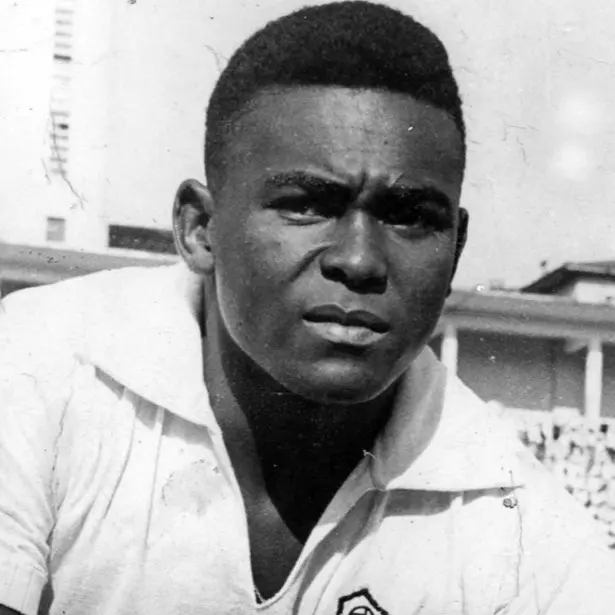
- Age : 15/16 years old
- Club : Santos FC
- Statistics : 40 games, 38 goals, / assists
- Trophies : Vice-Champion Brazilian League, Finalist São Paulo Championship, Rio-São Paulo Tournament
- Individual Awards : /
In 1959, Antonio Wilson Vieira Honório—soon to be known simply as Coutinho—took his first steps into the spotlight as a teenage prodigy at Santos FC, a club already brimming with talent. At just 15 years old, he debuted with a maturity and flair that belied his age, scoring in his very first match and instantly drawing comparisons to his legendary teammate, Pelé. Though still raw, Coutinho’s clinical finishing and tight-space dribbling hinted at the brilliance to come. That year, Santos lifted the Torneio Rio-São Paulo, with Coutinho contributing key goals and moments of magic that made fans take notice. His instinctive movement and ability to read Pelé’s intentions laid the groundwork for what would become one of football’s most iconic partnerships. Even in his earliest appearances, Coutinho showed a knack for one-touch interplay, often exchanging rapid passes with Pelé that left defenders bewildered.
#9 John Charles
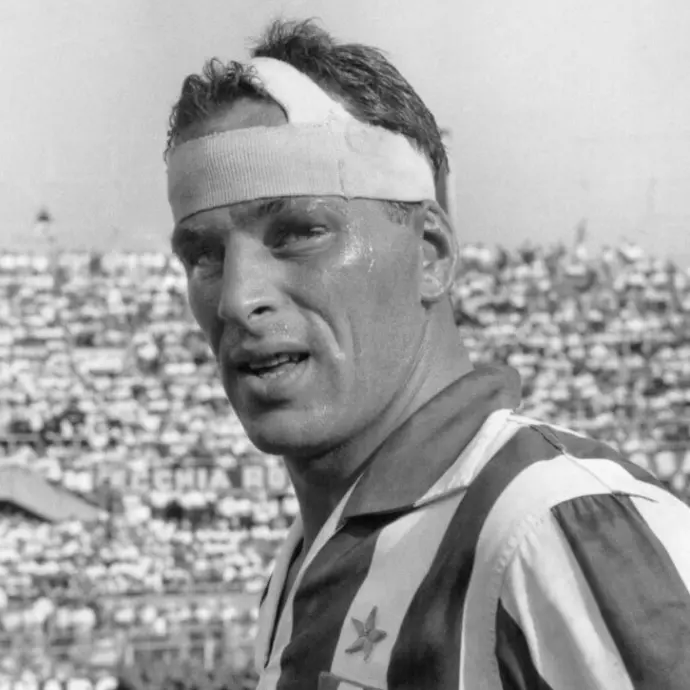
- Age : 27 years old
- Club : Juventus Turin
- Statistics : 39 games, 28 goals, / assists
- Trophies : Italian Cup
- Individual Awards : Seria A TOTY
In 1959, John Charles—revered in Turin as Il Gigante Buono—was at the peak of his powers, anchoring Juventus’s attack with a blend of brute strength and gentlemanly grace. While the club fell short in Serie A, finishing fourth, Charles remained a beacon of consistency, netting 28 goals in 39 appearances and helping Juventus lift the Coppa Italia, scoring in the final against Inter Milan. His partnership with Omar Sivori and Giampiero Boniperti—dubbed the Trio Magico—was a masterclass in complementary styles: Charles’s aerial dominance and clinical finishing balanced Sivori’s flair and Boniperti’s tactical intelligence. Off the pitch, Charles’s humility and sportsmanship earned him the nickname “Gentle Giant”—a moniker he lived up to, having never received a booking during his entire five-year stint in Italy.
#8 Lev Yashin
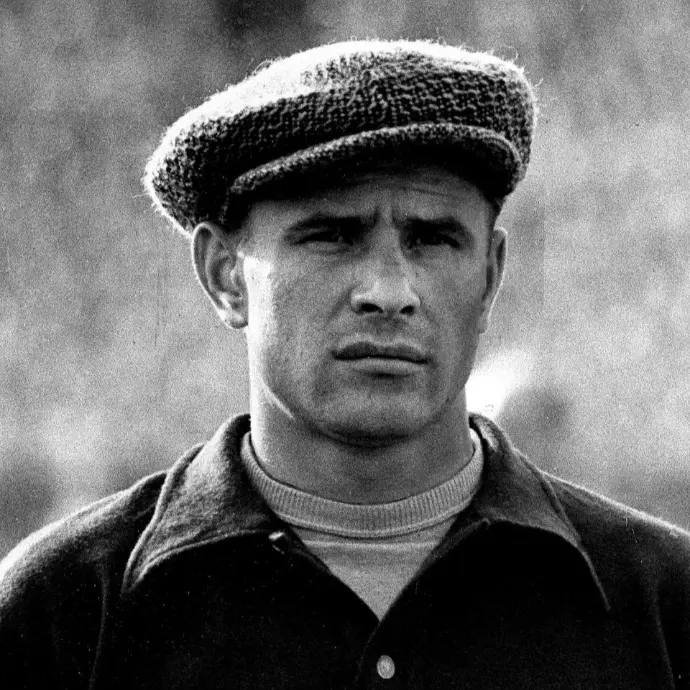
- Age : 29/30 years old
- Club : Dynamo Moscow
- Statistics : 21 games, 16 goals conceded, 9 clean sheets
- Trophies : USSR League
- Individual Awards : USSR League TOTY
In 1959, Lev Yashin—already a towering figure in Soviet football—was redefining what it meant to be a goalkeeper. At 30 years old, he was in his prime at Dynamo Moscow, where he helped secure the USSR Championship that year. Clad in his iconic all-black kit, Yashin’s presence between the posts was both intimidating and revolutionary. Nicknamed the “Black Spider”, he was known for his acrobatic reflexes, commanding voice, and fearless anticipation—often rushing off his line to intercept danger, a rarity at the time. His performances in 1959 solidified his reputation as the most modern goalkeeper of his era, blending athleticism with tactical innovation. Internationally, Yashin was a cornerstone of the USSR national team, preparing for the inaugural European Nations’ Cup in 1960, which they would go on to win. His leadership and shot-stopping ability were instrumental in shaping the Soviet defense into one of the most formidable units in world football.
#7 Ferenc Puskás
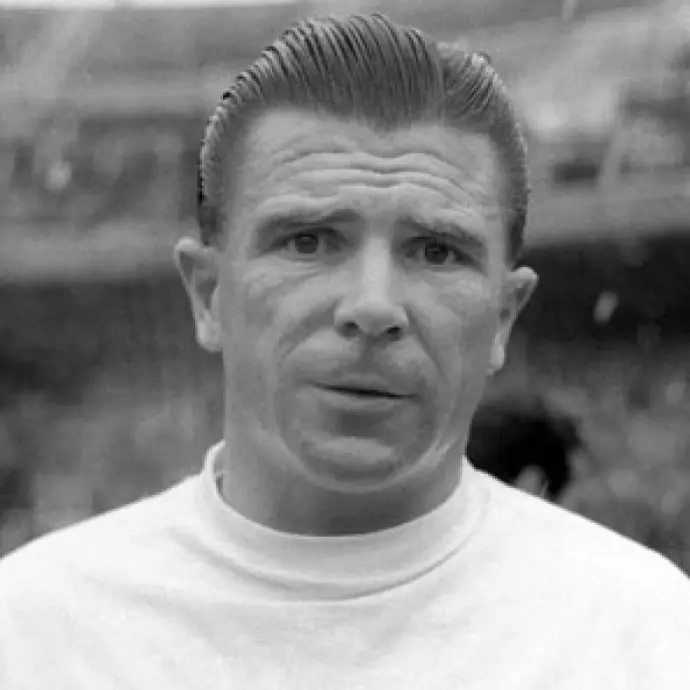
- Age : 31/32 years old
- Club : Real Madrid
- Statistics : 34 games, 29 goals, / assists
- Trophies : Champions League, Vice-Champion Liga
- Individual Awards : /
In 1959, Ferenc Puskás was a revelation reborn—defying time and expectation as he settled into his second full year with Real Madrid. At 32, the Hungarian maestro was no longer just a legend from Budapest—he was now the beating heart of Los Blancos’ attacking juggernaut. With his cannon of a left foot and an eye for goal that bordered on clairvoyance, Puskás netted 29 goals across all competitions, a staggering tally that announced his dominance in Spain and beyond. That year, he claimed his first Pichichi Trophy with 26 goals in La Liga, proving that brilliance doesn’t fade—it evolves. His chemistry with Alfredo Di Stéfano was electric, a symphony of movement and intuition that left defenders grasping at shadows. Together, they powered Real Madrid to the European Cup final, where Puskás scored in the semi-final against Atlético Madrid and helped secure the club’s fourth consecutive continental crown.
#6 Francisco Gento
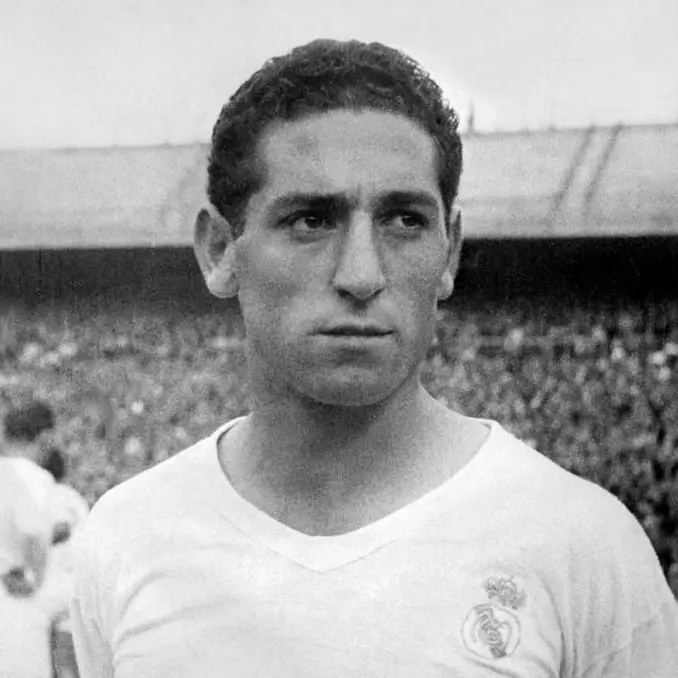
- Age : 25/26 years old
- Club : Real Madrid
- Statistics : 39 games, 19 goals, / assists
- Trophies : Champions League, Vice-Champion Liga
- Individual Awards : Champions League TOTY, Liga TOTY
In 1959, Francisco Gento was the tempest on Real Madrid’s left flank—a blur of speed and elegance that left defenders dizzy and fans breathless. At 25, “La Galerna del Cantábrico” was no longer just a promising winger; he was a full-blown phenomenon, redefining what it meant to be a wide player in European football. That year, Gento helped Real Madrid clinch their fourth consecutive European Cup, scoring crucial goals and terrorizing full-backs with his blistering pace and pinpoint crosses. In La Liga, while the team fell just short of the title, Gento’s performances were electric—his 19 goals across competitions were often the spark that ignited Madrid’s attacking fire. His synergy with Di Stéfano, Puskás, and Kopa turned Real Madrid into a symphony of destruction, with Gento as the high-speed soloist. He didn’t just run past defenders—he left them in his wake, often delivering the final ball that made legends out of his teammates.
#5 Just Fontaine
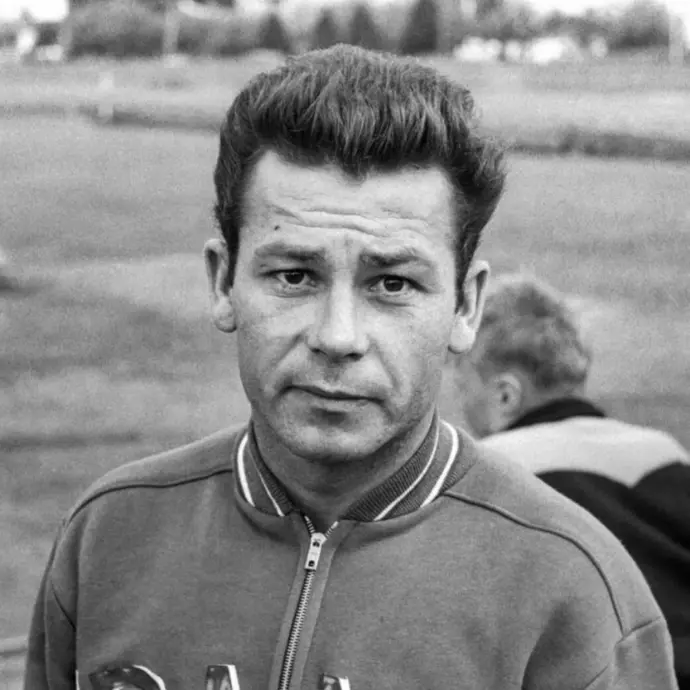
- Age : 25/26 years old
- Club : Stade de Reims
- Statistics : 46 games, 37 goals, / assists
- Trophies : Finalist Champions League
- Individual Awards : Champions League TOTY, Champions League Golden Shoe (10 goals)
In 1959, Just Fontaine was the embodiment of French firepower—an instinctive striker whose boots seemed magnetized to the back of the net. At 25, fresh off his record-shattering World Cup performance the year prior, Fontaine continued to blaze through defenses with Stade de Reims, proving that his brilliance wasn’t a one-tournament wonder—it was a sustained eruption. That year, he led Reims to the European Cup final, scoring 10 goals in the competition to finish as its top scorer. Though Real Madrid claimed the trophy, Fontaine’s path to the final was a masterclass in finishing—clinical, composed, and utterly relentless.
#4 Luis Suárez
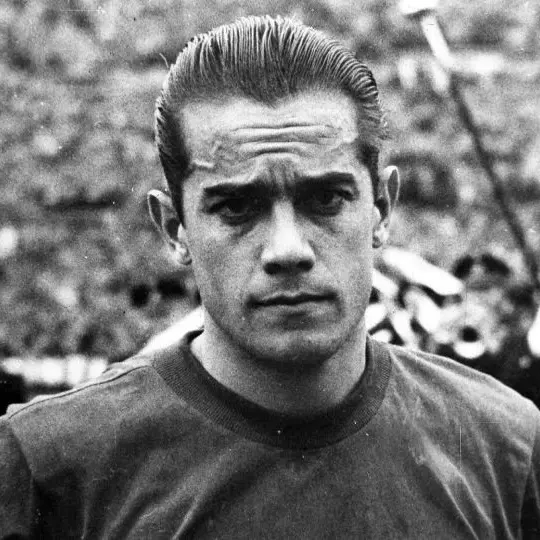
- Age : 22/23 years old
- Club : FC Barcelona
- Statistics : 46 games, 26 goals, / assists
- Trophies : Liga, Spanish Cup
- Individual Awards : Liga TOTY
In 1959, Luis Suárez Miramontes was the cerebral engine of FC Barcelona—a midfield maestro whose elegance and intellect earned him the nickname El Arquitecto. At 24, he was orchestrating play with the precision of a conductor, guiding Barça to one of their finest seasons in the post-war era. That year, Suárez helped Barcelona clinch the La Liga title, contributing 14 goals from midfield—a tally that spoke volumes of his attacking instincts and technical mastery. He added another 6 goals in the Copa del Generalísimo, including a standout performance in the final against Granada, where Barça triumphed 4–1 to complete the domestic double. Suárez’s vision was unmatched. He didn’t just pass the ball—he passed time, space, and expectation. With teammates like Kubala, Kocsis, and Czibor, he formed a constellation of brilliance that lit up the Camp Nou.
#3 Raymond Kopa
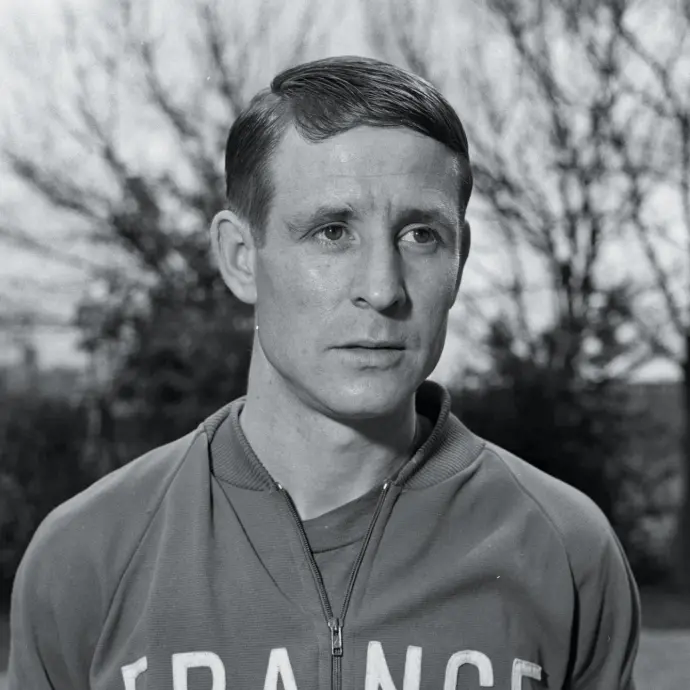
- Age : 27/28 years old
- Club : Real Madrid/Stade de Reims
- Statistics : 40 games, 14 goals, / assists
- Trophies : Champions League, Vice-Champion Liga
- Individual Awards : Champions League TOTY, Liga TOTY
In 1959, Raymond Kopa was the prodigal son returning home—trading the white of Real Madrid for the red of Stade de Reims, and bringing with him the aura of a Ballon d’Or winner and three-time European champion. At 27, “Le Napoléon du football” had already conquered the continent, but now he sought to rekindle the magic where it all began. That year marked a turning point. Kopa left Madrid after three glittering seasons, during which he helped Real win three consecutive European Cups and two La Liga titles. His final act in Spain was a poetic one—facing his former club Reims in the 1959 European Cup final, where he danced between defenders like a matador, helping Madrid lift the trophy once more. Back in France, he rejoined Reims and immediately became the fulcrum of their attack. Though adjusting to a slower tempo and different tactical demands, Kopa’s class was unmistakable. His dribbling remained hypnotic, his passing surgical, and his leadership magnetic. He was no longer just a star—he was a symbol of French football’s rise.
#2 Alfredo Di Stéfano
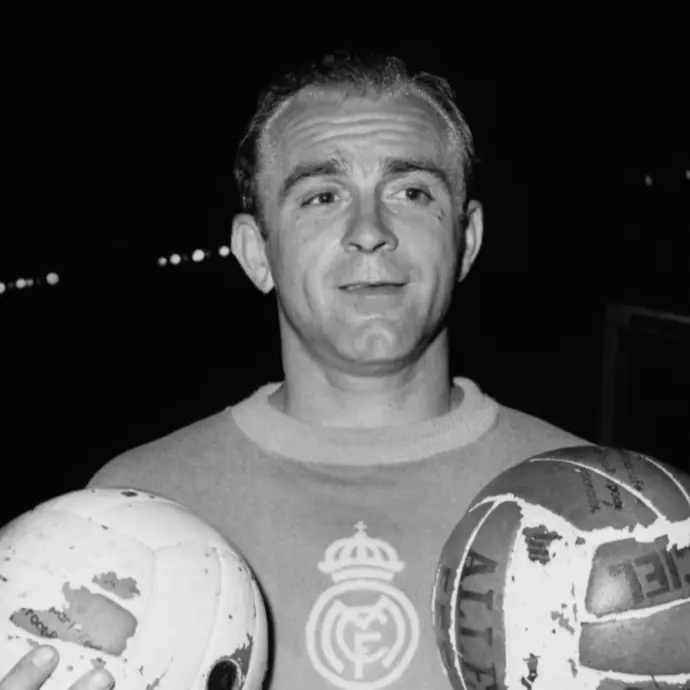
- Age : 32/33 years old
- Club : Real Madrid
- Statistics : 46 games, 35 goals, / assists
- Trophies : Champions League, Vice-Champion Liga
- Individual Awards : Champions League TOTY, Liga TOTY, Liga Golden Shoe (23 goals)
In 1959, Alfredo Di Stéfano was the undisputed conductor of Real Madrid’s symphony of dominance—a footballing polymath who blurred the lines between striker, playmaker, and midfield general. At 33, “La Saeta Rubia” wasn’t slowing down; he was accelerating into legend. That year, Di Stéfano led Real Madrid to their fourth consecutive European Cup, scoring in the final against Stade de Reims and finishing the tournament with 8 goals, including a brace in the semi-final against Atlético Madrid. In La Liga, he claimed his fifth and final Pichichi Trophy with 23 goals, a testament to his enduring brilliance and unmatched versatility.
Winner : Pelé
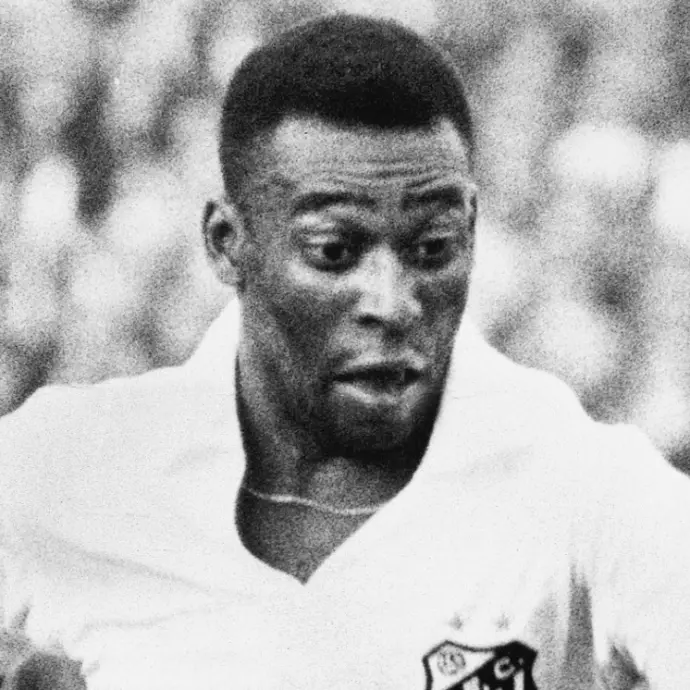
- Age : 18/19 years old
- Club : Santos FC
- Statistics : 49 games, 63 goals, 22 assists
- Trophies : Copa Bernardo O’Higgins, Vice-Champion Brazilian League, Finalist São Paulo Championship, Rio-São Paulo Tournament
- Individual Awards : Copa America POTT, Copa America TOTT, Copa America Golden Shoe (8 goals), São Paulo Championship Golden Shoe (45 goals)
In 1959, Pelé was already rewriting the laws of football—an 18-year-old prodigy who played like a seasoned virtuoso. Fresh off his World Cup heroics the year before, O Rei didn’t slow down; he accelerated into myth. That year, he scored an astonishing 127 goals addind friendlies for Santos FC across all competitions—a record that remains one of the most jaw-dropping feats in football history. Pelé’s performances were a whirlwind of flair and precision. He led Santos to the Campeonato Paulista title, dominating the domestic scene with a goal tally that defied belief. But his brilliance wasn’t confined to Brazil. In the 1959 South American Championship held in Argentina, Pelé was the tournament’s top scorer with 8 goals and was named Best Player—even though Brazil finished runners-up to the hosts. His style was electric: ambidextrous, unpredictable, and impossibly fluid. He didn’t just beat defenders—he dismantled them with feints, bursts of acceleration, and a sixth sense for goal. At an age when most players are still finding their footing, Pelé was already the heartbeat of the Seleção and the soul of Santos.